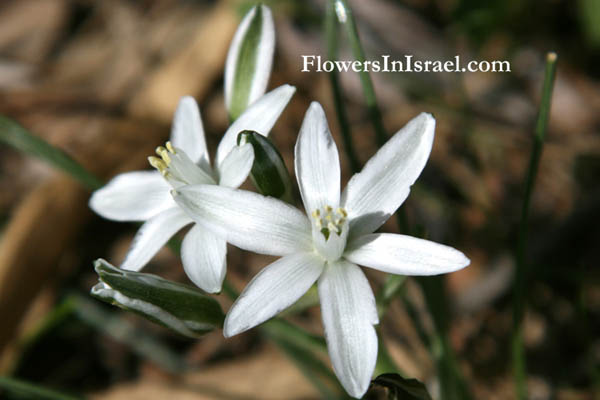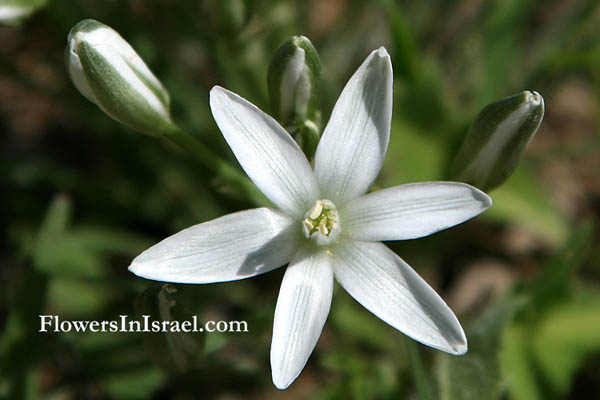Hebrew: נץ-חלב דק-עלים, Arabic: صاصل صوفي الأوراق
| Scientific name: | Ornithogalum trichophyllum Boiss. et Heldr. | |
| Common name: | Fine-Leaved Star-of-Bethlehem | |
| Hebrew name: | נץ-חלב דק-עלים | |
| Arabic name: | صاصل صوفي الأوراق | |
| Family: | Liliaceae, שושניים |

|
| Life form: | Geophyte | |
| Leaves: | Rosette, entire | |
| Flowers: | White | |
| Flowering Period: | January, February, December | |
| Habitat: | Shrub-steppes | |
| Distribution: | Mediterranean Woodlands and Shrublands, Semi-steppe shrublands, Shrub-steppes, Deserts and extreme deserts | |
| Chorotype: | Irano-Turanian - Saharo-Arabian | |
| Summer shedding: | Ephemeral |

Derivation of the botanical name: Ornithogalum, ornis ορνισ, ιϑοϛ , a bird, ornith pertaining to birds;galum, milk. Carl Linnaeus (1707 – 1778) says, that the roots of this plant are the Dove's dung (seed pods), which was sold so dear during the siege of Samaria, (II Kings 6:25); "which interpretation appears highly probable from the obvious identity of the name ornithogalum (Bird's-milk), and which was applied to this plant by many of the ancient writers, as Dioscorides, Pliny, &c.,and from the circumstance that they are, when boiled, eaten at the present day by the poorer inhabitants of Palestine, where grows in abundance; whence its English name Star of Bethlehem." trichophyllum, thrix ϑριξ, τριχοϛ, hair, wool, bristle; phyllon φυλλον, leaf; foliage; hairy leaves. The Hebrew name Netz-Halav, נץ-חלב, Hawk-milk is officially designated for the genus Ornitogalum, because the scientific name means bird milk, which corresponds to the meaning of the words hawk and milk. Netz, netza, the button in the plant from which the flower and fruit develop.
|